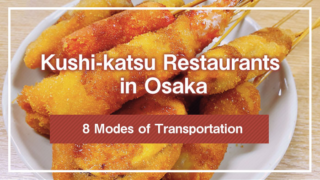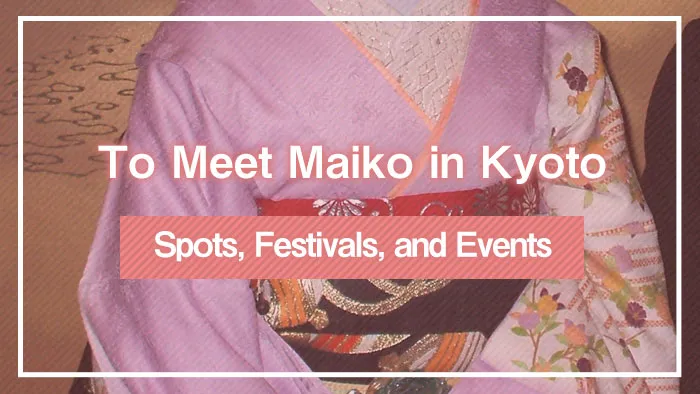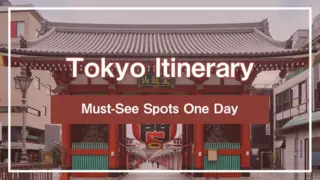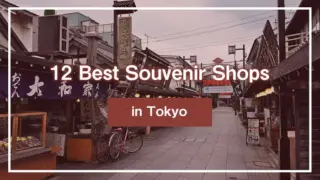As you walk through the historic streets of Kyoto, you might come across geisha dressed in splendid kimonos. Geisha are a cultural symbol of Kyoto, and meeting them can be a memorable part of your trip. While the terms “geiko” and “maiko” are similar to “geisha,” it’s important to note that in Kyoto, they are referred to as “geiko,” whereas outside of Kyoto, they are called “geisha.” Maiko are young women in training.
This article will introduce places, festivals, and events where you can meet maiko, as well as the best times to look for them. If you want to fully enjoy the geisha culture during your visit to Kyoto, be sure to read on.
- 1.What is a Geisha?
- 2.How to Identify a Real Maiko
- 3.Places in Kyoto Where You Can Meet Maiko
- 4.Festivals and Events in Kyoto Where You Can Meet Maiko
- 5.The Best Time to Look for Maiko in Kyoto
- 6.Photography Etiquette When You See a Maiko in Kyoto
- 7.Can Ordinary People Dine with Maiko in Kyoto?
- 8. Experience Being a Maiko in Kyoto
- Conclusion
1.What is a Geisha?
A geisha is a woman who entertains guests at dinners and banquets in traditional restaurants, as well as at events, with traditional dance and conversation. While geisha can be found in cities like Tokyo, Kyoto is especially known as the heart of geisha culture.
Let’s look at the differences between “geiko” and “maiko,” which are terms related to geisha.
1-1.Differences between Geisha and Geiko
Geisha and geiko are different names for the same profession. In Kyoto, they are called geiko, whereas outside Kyoto, they are called geisha.
In Kyoto, “geiko” is the correct term. Geiko are women who have completed at least five years of training to acquire the skills needed to entertain guests, and there is no age limit. Many experienced women work as geiko in Kyoto.
1-2.Differences between Maiko and Geiko
A maiko is a young woman in training, while a geiko is someone who has completed her training. Maiko are usually between 15 and 20 years old and become geiko after about five years of training.
You can distinguish between maiko and geiko by their kimonos and hair ornaments. Maiko wear colorful kimonos with long sleeves and often adorn their hair with elaborate “kanzashi” (hair ornaments). In contrast, geiko wear more subdued kimonos with shorter sleeves and fewer hair ornaments.
2.How to Identify a Real Maiko
In Kyoto, some tourists use rental services to experience being a maiko. They dress in similar makeup, hairstyles, and kimonos, making it easy to mistake them for actual maiko.
If you see someone eating while walking, chances are they are a tourist in a maiko costume, as real maiko do not eat while walking. Additionally, maiko seen strolling leisurely during the day are likely not genuine, as real maiko are typically busy and walk quickly.
3.Places in Kyoto Where You Can Meet Maiko
Kyoto has special districts called “hanamachi” where many maiko gather. Hanamachi are areas with teahouses, restaurants, and banquet rooms where maiko and geiko entertain guests. Maiko and geiko reside in places called “okiya” in these districts. Therefore, visiting a hanamachi increases your chances of encountering a maiko during your sightseeing.
Kyoto has the following five hanamachi:
- Gion Kobu
- Gion Higashi
- Miyagawa-cho
- Pontocho
- Kamishichiken
The best time to spot maiko is in the evening, when they are heading to their workplaces, either walking on the streets or riding taxis.
4.Festivals and Events in Kyoto Where You Can Meet Maiko
General tourists can meet maiko at public events and dance performances, as well as at Kyoto festivals. Joining optional tours organized by travel agencies is another way to see maiko.
Annual dance events in Kyoto include:
Kamogawa Odori
A dance drama performed by maiko and geiko of Pontocho, it is the most frequently performed dance drama among the five hanamachi in Kyoto.
Miyako Odori
A performance by the maiko and geiko of Gion Kobu, featuring many performers and vibrant scenes.
Kyō Odori
A spring performance by the maiko and geiko of Miyagawa-cho, with the finale showcasing all performers in spring kimonos.
Kitano Odori
A performance by the maiko and geiko of Kamishichiken, known for the excellent skill level of its performers despite having less participants.
Kyoto festivals where you can meet maiko and geiko include:
Setsubun Festival at Yasaka Shrine
A festival at Yasaka Shrine featuring dance performances by maiko and geiko. The festival includes “mamemaki” (bean-throwing) to ward off evil spirits.
Reisai Festival Dance at Heian Shrine
Dance performances by the maiko and geiko of Gion Kobu, Miyagawa-cho, Pontocho, and Gion Higashi at the Daigokuden stage within Heian Shrine.
Gion Festival Post-Festival Ritual at Yasaka Shrine
The “Hanagasa Junko” event during the Gion Festival features nearly 1,000 participants, including maiko and geiko from various hanamachi, parading through Kyoto. After the parade returns to Yasaka Shrine, a dance performance by maiko and geiko can be enjoyed.
5.The Best Time to Look for Maiko in Kyoto
The best time to look for maiko is between 5:30 PM and 6:00 PM. During this time, maiko are often heading out for their evening engagements.
Choose hanamachi districts where many maiko and geiko gather. These districts not only have teahouses but also okiya where maiko and geiko live. Visiting hanamachi between 5:30 PM and 6:00 PM will give you a better chance of seeing a maiko.
6.Photography Etiquette When You See a Maiko in Kyoto
It’s important to remember not to interrupt maiko for photos.Like everyone else, maiko have portrait rights, and taking their photo without permission is illegal.
It is also important not to stop maiko to ask for photos. When they are out, they are usually on their way to work. Stopping or delaying them can be a nuisance. If you see a maiko, the best thing to do is to let them go about their business.
In hanamachi areas, some troublesome photographers have become a significant issue by chasing maiko to take photos. This problem has led to “No Passage” signs being put up in certain alleys by local management organizations. While enjoying Kyoto sightseeing, remember to respect the maiko and the local community by following proper etiquette.
7.Can Ordinary People Dine with Maiko in Kyoto?
Dining with maiko and geiko was considered to be a high-end activity in the past, but recently, even ordinary people can enjoy this experience.
For example, lunch or dinner shows are available where you can enjoy a meal followed by a performance by maiko. In some cases, you can even participate in traditional games called “ozashiki asobi” with the maiko.
Some travel agencies offer plans that include dining with maiko or geiko, and there are options for non-Japanese speakers as well. Consider these plans when planning your visit to Kyoto.
8. Experience Being a Maiko in Kyoto
One of the recommended plans for Kyoto sightseeing is a day tour where you can experience being a maiko. This includes makeup, kimono, and hairstyle similar to those of a maiko, with the help of professional staff for a genuine experience. After transforming into a maiko, you can take commemorative photos and stroll around Kyoto in costume.
Some travel agencies offer day tours with English-speaking staff for foreign tourists. Booking such plans ensures that even those who do not speak Japanese can have a comfortable and enjoyable experience.
Conclusion
In Kyoto, you can meet elegant maiko and geiko in hanamachi districts, at dance events, and at shrine festivals. The best time to look for maiko in hanamachi is between 5:30 PM and 6:00 PM when they are heading out for work.
If you happen to spot a maiko while strolling around, please avoid interrupting them for photographs. It’s important to appreciate the maiko culture while being considerate of their time and the local community.. In Kyoto, you can also dine with maiko or even experience being a maiko yourself. Make sure to explore and enjoy the rich culture of maiko during your visit to Kyoto!
*This article is based on information available as of July 2024.























